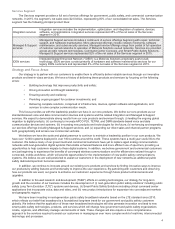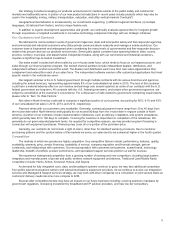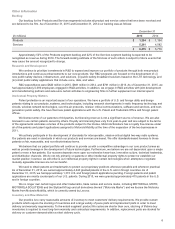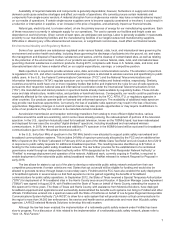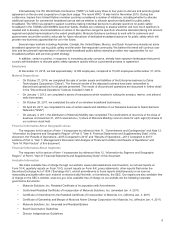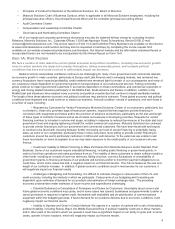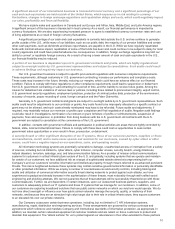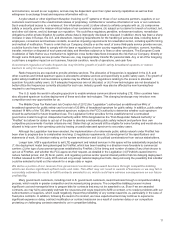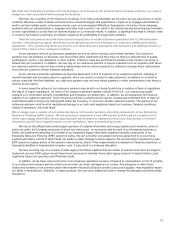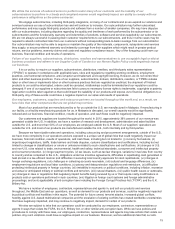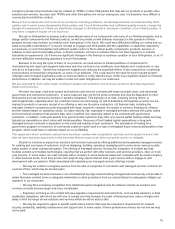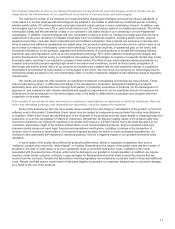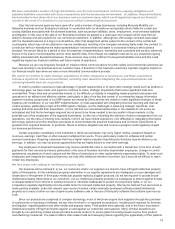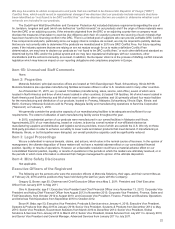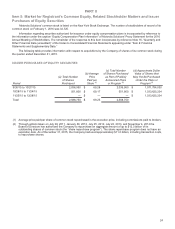Motorola 2015 Annual Report Download - page 15
Download and view the complete annual report
Please find page 15 of the 2015 Motorola annual report below. You can navigate through the pages in the report by either clicking on the pages listed below, or by using the keyword search tool below to find specific information within the annual report.14
We no longer own certain logos and other trademarks, trade names and service marks, including MOTOROLA, MOTO,
MOTOROLA SOLUTIONS and the Stylized M logo and all derivatives and formatives thereof (“Motorola Marks”) and we
license the Motorola Marks from Motorola Trademark Holdings, LLC (“MTH”), which is currently owned by Motorola
Mobility, a subsidiary of Lenovo. Our joint use of the Motorola Marks could result in product and market confusion and
negatively impact our ability to expand our business under the Motorola brand. In addition, if we do not comply with
the terms of the license agreement we could lose our rights to the Motorola Marks. Because of the change of control of
Motorola Mobility, which is now owned by Lenovo, we may find that an incompatible third-party owns the Motorola
Marks.
We have a worldwide, perpetual and royalty-free license from MTH to use the Motorola Marks as part of our corporate
name and in connection with the manufacture, sale, and marketing of our current products and services. The license of the
Motorola Marks is important to us because of the reputation of the Motorola brand for our products and services. There are risks
associated with both Motorola Mobility and the Company using the Motorola Marks and with this loss of ownership. As both
Motorola Mobility and the Company will be using the Motorola Marks, confusion could arise in the market, including customer
confusion regarding the products offered by and the actions of the two companies. Motorola Mobility was acquired by Lenovo in
2014, which resulted in Lenovo having effective control over the Motorola Marks. This risk could increase as both Motorola
Mobility's and our products continue to converge. This risk could increase under Lenovo's control if they expand their use of the
Motorola Marks. Also, any negative publicity associated with either company in the future could adversely affect the public image
of the other. In addition, because our license of the Motorola Marks will be limited to products and services within our specified
fields of use, we will not be permitted to use the Motorola Marks in other fields of use without the approval of Motorola Mobility,
which is now controlled by Lenovo. In the event that we desire to expand our business into any other fields of use, we may need
to do so with a brand other than the Motorola brand. Developing a brand as well-known and with as much brand equity as
Motorola could take considerable time and expense. The risk of needing to develop a second brand increases as Motorola
Mobility's and our products continue to converge and if our business expands into other fields of use. In addition, we could lose
our rights to use the Motorola Marks if we do not comply with the terms of the license agreement. Such a loss could negatively
affect our business, results of operations and financial condition. Furthermore, MTH has the right to license the brand to third-
parties and either Motorola Mobility or licensed third-parties may use the brand in ways that make the brand less attractive for
customers of Motorola Solutions, creating increased risk that Motorola Solutions may need to develop an alternate or additional
brand. In 2013 Motorola Mobility modified certain Motorola Marks used by the Company. Motorola Mobility may require the
Company to adopt the use of the modified Motorola Marks, which would result in the Company incurring the costs of rebranding.
In addition, neither Motorola Mobility nor Lenovo are prohibited from selling the Motorola Marks. In the event of a
liquidation of Motorola Mobility or the then owner of the Motorola Marks, it is possible that a bankruptcy court would permit the
Motorola Marks to be assigned to a third-party. While our right to use the Motorola Marks under our license should continue in
our specified field of use in such situations, it is possible that we could be party to a license arrangement with a third-party
whose interests are incompatible with ours, thereby potentially making the license arrangement difficult to administer, and
increasing the costs and risks associated with sharing the Motorola Marks. In addition, there is a risk that, in the event of a
bankruptcy of Motorola Mobility or the then owner of the Motorola Marks, Motorola Mobility, the then owner or its bankruptcy
trustee may attempt to reject the license, or a bankruptcy court may refuse to uphold the license or certain of its terms. Such a
loss could negatively affect our business, results of operations and financial condition.
We may not continue to have access to the capital markets for financing on acceptable terms and conditions,
particularly if our credit ratings are downgraded, which could limit our ability to repay our indebtedness and could
cause liquidity issues.
From time to time we access the capital markets to obtain financing. Our access to the capital markets and the bank credit
markets at acceptable terms and conditions are impacted by many factors, including: (i) our credit ratings, (ii) the liquidity of the
overall capital markets, (iii) strength and credit availability in the banking markets, and (iv) the current state of the global
economy. In addition, we frequently access the credit markets to obtain performance bonds, bid bonds, standby letters of credit
and surety bonds, as well as to hedge foreign exchange risk and sell receivables. In addition, there can be no assurances we
will be able to refinance our existing indebtedness (i) on commercially reasonable terms, (ii) on terms, including with respect to
interest rates, as favorable as our current debt, or (iii) at all. There can be no assurances that we will continue to have access to
the capital markets or bank credit markets on terms acceptable to us and if we are unable to repay or refinance our debt, we
cannot guarantee that we will be able to generate enough cash flows from operations or that we will be able to obtain enough
capital to service our debt, fund our planned capital expenditures or pay future dividends.
We are rated investment grade by all three national rating agencies. Any downward changes by the rating agencies to our
credit rating may negatively impact the value and liquidity of both our debt and equity securities. Under certain circumstances, an
increase in the interest rate payable by us under our revolving credit facility, if any amounts were borrowed under such facility,
could negatively affect our operating cash flows. In addition, a downgrade in our credit ratings could limit our ability to: (i) access
the capital markets or bank credit markets, (ii) provide performance bonds, bid bonds, standby letters of credit and surety bonds,
(iii) hedge foreign exchange risk, (iv) fund our foreign affiliates, and (v) sell receivables. A downgrade in our credit rating could
also result in less favorable trade terms with suppliers. In addition, any downgrades in our credit ratings may affect our ability to
obtain additional financing in the future and may affect the terms of any such financing. Any future disruptions, uncertainty or
volatility in the capital markets may result in higher funding costs for us and adversely affect our ability to access funds and other
credit related products. In addition, we may avoid taking actions that would otherwise benefit us or our stockholders, such as
engaging in certain acquisitions or engaging in stock repurchases, that would negatively impact our credit rating.


